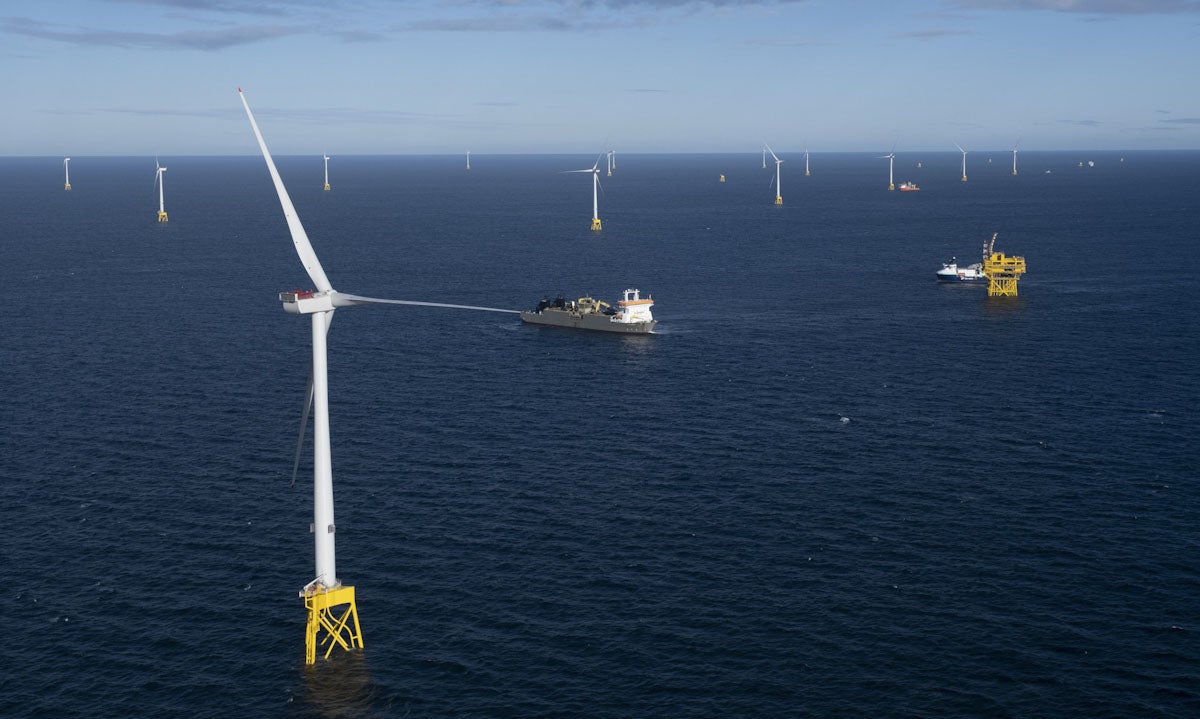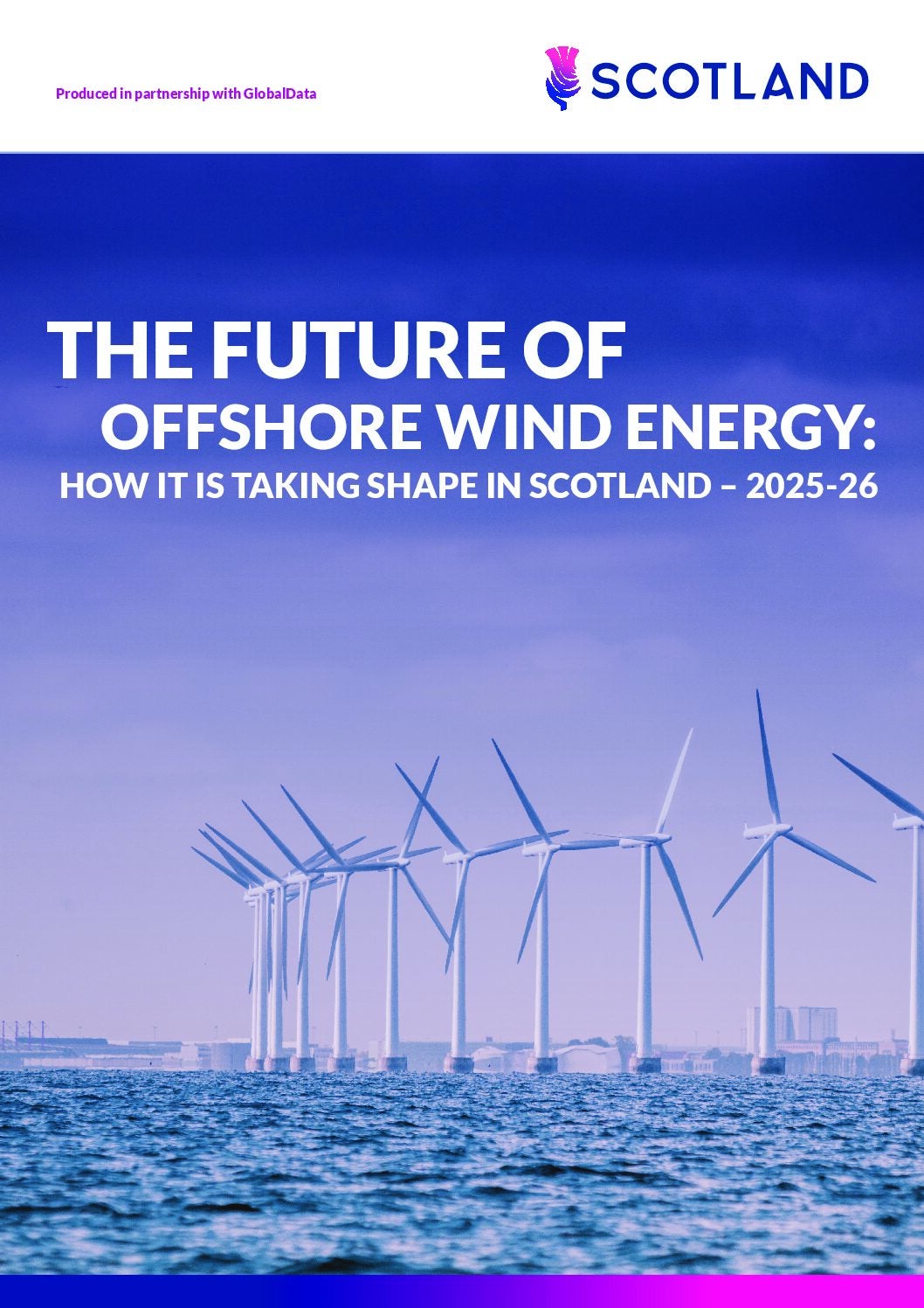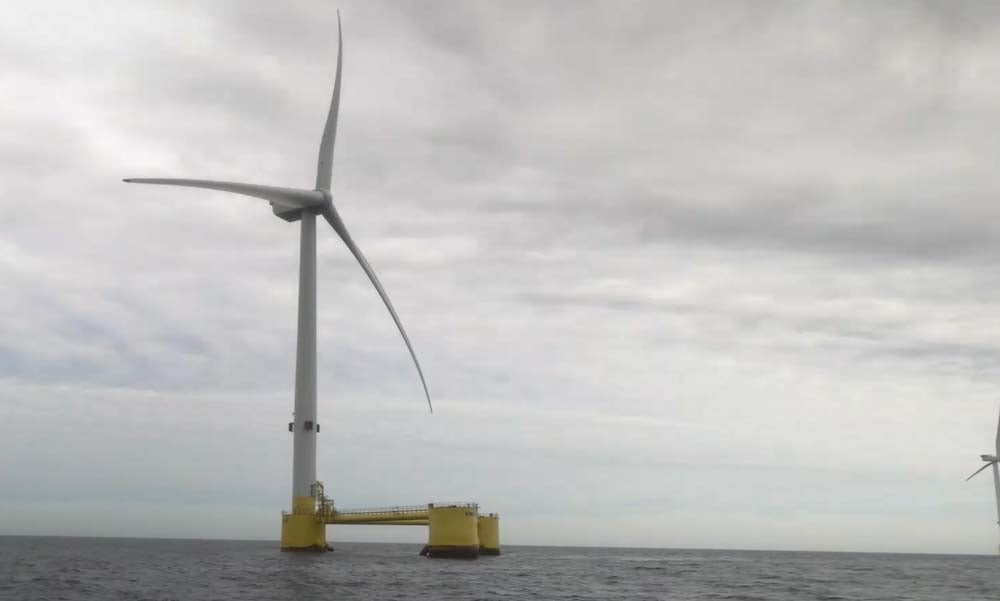
The ambition of offshore wind in Scotland is vast, with more than 45GW of projects at various stages of development to deliver vital clean energy. To achieve such a scale, numerous challenges must be overcome and new solutions developed.
Yet there are clear signs of progress across Scotland, with a strong sense of getting everything in place to fulfil the industry’s promise.
The Innovation and Targeted Oil and Gas (INTOG) and ScotWind offshore leasing rounds with the Crown Estate Scotland are major growth drivers for the Scottish offshore wind industry. The leasing rounds could facilitate combined investments of £96.1bn for Scotland within the next 15 years, supporting tens of thousands of jobs.
In addition, the Scottish Government is investing up to £500m in the national supply chain for offshore wind over five years, which is intended to unlock private investment of approximately £1.5bn. The UK Government is providing further support, with offshore wind a central pillar of its Clean Power 2030 Action Plan.
The total investments will touch every facet of the industry beyond the wind farms, ranging from the infrastructure to the materials and individual components in the supply chain. Furthermore, there is a desire in Scotland to not just speak with developers, but also engage with professionals such as contractors, installers, manufacturers, and project managers.
“If you look at the infrastructure investment, inward investment, the companies setting up facilities in Scotland – there is strong progress being made,” says David Rennie, head of low carbon energy at Scottish Enterprise. “There’s a lot to do here, but you have to keep an eye on the size of the prize in terms of the billions of pounds of investment and the jobs.”
The new Scottish offshore wind farms moving ahead
Floating wind plays a significant role in Scotland’s energy ambitions, accounting for more than half of the total in planned offshore wind projects. One example of industry advances is the Green Volt project receiving planning consent from the Scottish Government in April 2024.
With a capacity of 560MW generated by 35 turbines, Green Volt is set to be Europe’s largest commercial offshore wind farm. The fact that it is a floating facility makes the project all the more significant, given that floating wind technologies are still a relatively new development for the industry.
Green Volt is one of the projects in the INTOG leasing round. INTOG has been designed to reduce emissions from North Sea oil and gas operations as part of the energy transition. The UK National Grid will receive electricity from the project, which is predicted to cut an estimated one million tonnes of CO2 emissions a year.
Green Volt could be surpassed by an even larger floating wind project progressing through INTOG, 190km off the coast of Peterhead. The 1.35GW Cenos floating wind farm will consist of 95 turbines up to 320m in height. In February, Cenos developers applied for consent from the Scottish Government’s Marine Directorate.
Then in March, the 100MW Salamander floating wind farm was granted planning permission in principle for its onshore elements. The INTOG project will be situated 35km from Peterhead and is waiting for a decision by Scotland’s Marine Directorate on the offshore consent application.
In the larger ScotWind leasing round, substantial offshore wind projects have also applied for planning consent recently. These are the floating 1GW Muir Mhor project, 63km from Peterhead, and the 2GW fixed-foundation Caledonia project in Moray Firth – both scheduled to be operational in the 2030s.
More ScotWind fixed-foundation projects are also making progress. The 2GW West of Orkney Windfarm project received approval from the Highland Council in March, moving a step forward to gaining full offshore consent. While developers of the 3.6GW Ossian wind farm have recently completed two years of wind data tests at the site 84km from the Scottish east coast to support its planning application.
“We shouldn’t shy away from the fact that we’re going to have to invest a lot of money, but it goes back to the returns on investment,” adds Rennie.
Upgrading Scotland’s ports for offshore wind
Access to seaports is crucial for the offshore wind industry. To build a large-scale facility from scratch would require a capital expenditure likely running into the billions of pounds.
This is where Scotland has a decisive advantage. The country has 11 major ports, which handle more than one million tonnes of cargo a year. Many of these industrial ports have received investments to accommodate offshore wind, including the Port of Aberdeen and the deepwater port of Cromarty Firth – which has received UK Government funding.
Scottish Enterprise has invested in the Port of Montrose, home to the operations and maintenance (O&M) hub for the 1,076MW Seagreen wind farm. The development is Scotland’s largest offshore wind facility. Seagreen is also the world’s deepest offshore wind farm with foundations at depths of 58.7m.
In addition, the historic fishing port of Buckie is being repurposed to specialise in O&M for offshore wind facility services. While the Port of Nigg recently received £10m from Highlands and Islands Enterprise (HIE) to redevelop the site for the energy transition, with notable manufacturing facilities now located nearby.
“There’s no reason why these ports can’t service offshore wind,” says Rennie. “Some of that port investment is to deal with floating because floating has much bigger turbines in terms of scale.”
Alongside the larger hubs, Scotland has approximately 200 smaller ports and harbours. While these smaller facilities cannot compete with the larger ports in terms of capacity, they can still develop niches for offshore wind – such as manufacturing specific turbine components. As more offshore wind farms are built in Scottish waters, there will be opportunities for many more ports to contribute to the industry over the long term.
“Even relatively smaller ports can still play a role in that offshore wind support system,” adds Rennie. “It’s not just for the big guys.”
Building the offshore wind supply chain in Scotland
Building windfarms of such vast scale requires a robust supply chain. A key condition for developers in the ScotWind and INTOG leasing rounds is to use Scottish suppliers for materials and services – such as operations and maintenance – as much as possible. This covers everything beyond the turbine blades, nacelles and gearboxes, to the ropes and chains required to install and tether floating windfarms, as well as the subsea cables to carry electricity to substations or the shore.
International companies are already setting up operations in Scotland to tap into the market opportunities in a stable location for investments amid increasing economic uncertainty around the world. For suppliers, there is a strong domestic end-market available in Scotland.
A ringing endorsement of investor confidence in Scottish offshore wind came in November 2024, when Japanese company Sumitomo Electric Industries announced that it was setting up a manufacturing facility for subsea cable at the Port of Nigg.
The state-of-the-art facility has received an estimated £24.5m in combined funding from the Scottish Government and economic development agencies such a Scottish Enterprise. Tax relief is available due to the site being part of one of Scotland’s two green freeports.
“That will be a strategic asset for Scotland and that has the potential to produce not just cables for offshore wind, but cables for grid – and also have an export market,” adds Rennie.
Building the offshore wind skills base
A skilled and experienced workforce is another essential factor in enabling progress in offshore wind. However, this is not without its challenges amid a global talent shortage. To address these issues and deliver on the ambition of offshore wind in Scotland there are several initiatives.
The National Manufacturing Institute Scotland (NMIS) leads a skills group looking at the offshore wind industry. One new initiative intended to help facilitate this is a skills passport, which will enable offshore professionals to move from oil and gas to offshore wind careers more easily.
“The fact we’ve got that know-how on our doorstep is a massive advantage for us – to have that sort of expertise built over 50 years,” adds Rennie. “If you can build things and put them into deep water, there’s a huge crossover in areas such as surveys, engineering work and design.”
Elsewhere, the Floating Wind Innovation Centre (FLOWIC) in Aberdeen is part of the Offshore Renewable Energy Catapult. The centre develops the specialist technologies and skills required for floating wind challenges, with realistic simulation facilities available to test solutions thoroughly on shore.
Additionally, there are collaborations with future talent at schools and universities from developers such as Vattenfall and Fred Olsen Seawind. The team behind the Muir Mhor wind farm are working with Mintlaw Academy in Aberdeenshire to offer activities on the Girls in Energy course, designed to get female students energy industry experience. Furthermore, the developers are working with Scottish universities to provide funding for a select number of graduates keen to pursue careers in offshore wind.
“We are looking at some positive actions to really maximise the availability of skills and people in Scotland,” says Rennie.
To hear how Scotland is delivering its offshore wind ambitions, listen to the podcast below:
To learn more about offshore wind in Scotland, download the document below.





